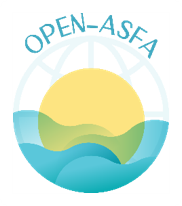Preliminary inventory of metazoan parasites of the Lessepsian bluespotted cornetfish Fistularia commersonii in the Gulf of Gabès, Tunisia
DOI:
https://doi.org/10.71754/instm.bulletin.v48.1573Keywords:
Metazoan parasites, Lessepsian migration, Fistularia commersonii, MED, Tunisia, Gabes Gulf, Mediterranean seaAbstract
Biological invasions are widely acknowledged as a serious threat to biodiversity, but the role of parasites in marine ecosystem processes is still poorly understood. The so-called Lessepsian migration, or invasions through the Suez Canal from the Red Sea to the Mediterranean Sea, also fits this description. Here, we studied the parasitofauna of Fistularia commersonii collected from the Gulf of Gabès of Tunisia. 43 individuals of F. commersonii were sampled from the Gulf of Gabès. Parasite richness, prevalence and intensity were investigated, Additionally, we reviewed the literature to identify native and invasive parasite species recorded. Our results suggest the co-introduction of nine parasite species that are assumed to be originate from the Red Sea. In addition, we found that the invasive fish has acquired nineteen parasite species that are native from the Mediterranean Sea. The Lessepsian migrant may potentially change the dynamics of native and invasive parasite-host interactions through parasite co-introduction and parasite acquisition, according to these results. The higher F. commersonii infection rates in the area that has been invaded are also consistent with the predictions made by the "Enemy Release Hypothesis." These results show the importance of using community studies, such as the one described here, to understand the role of parasites in Lessepsian migration.
Downloads
Downloads
Published
How to Cite
Issue
Section
ARK
License
Copyright (c) 2023 Wiem BOUSSELLAA , Hela DERBEL, Lassad NEIFAR

This work is licensed under a Creative Commons Attribution 4.0 International License.












